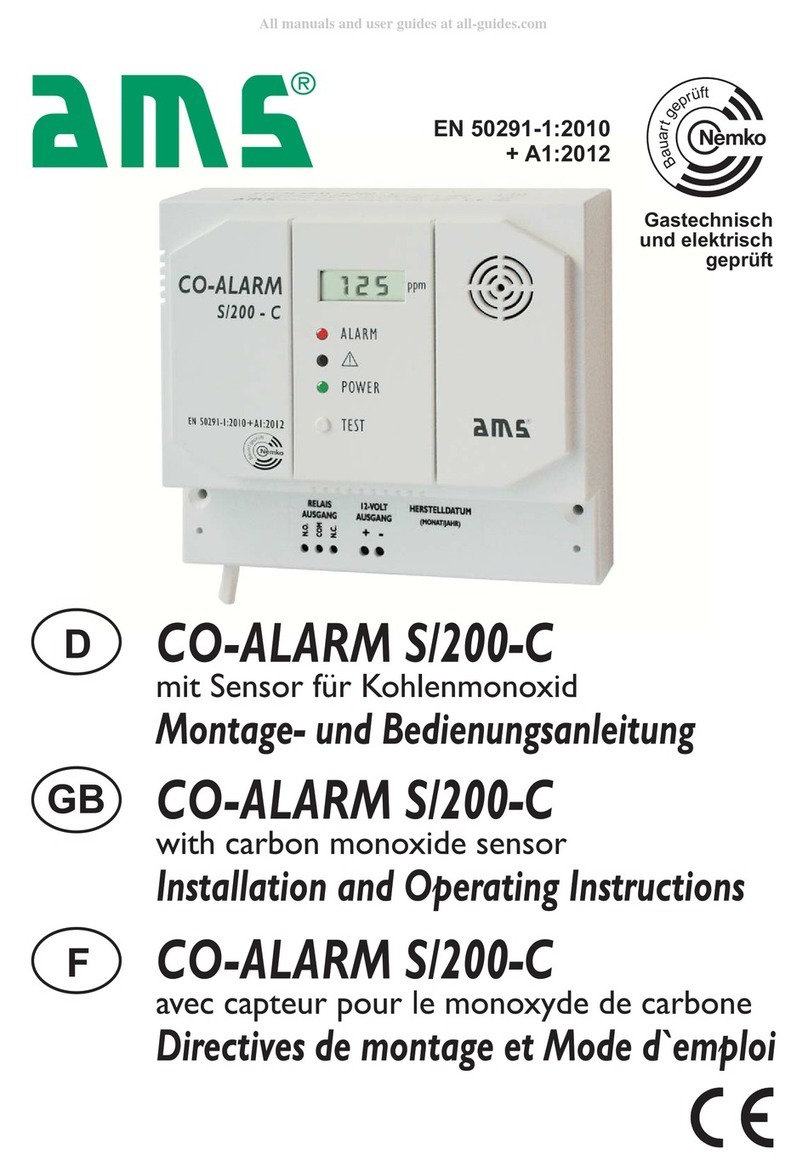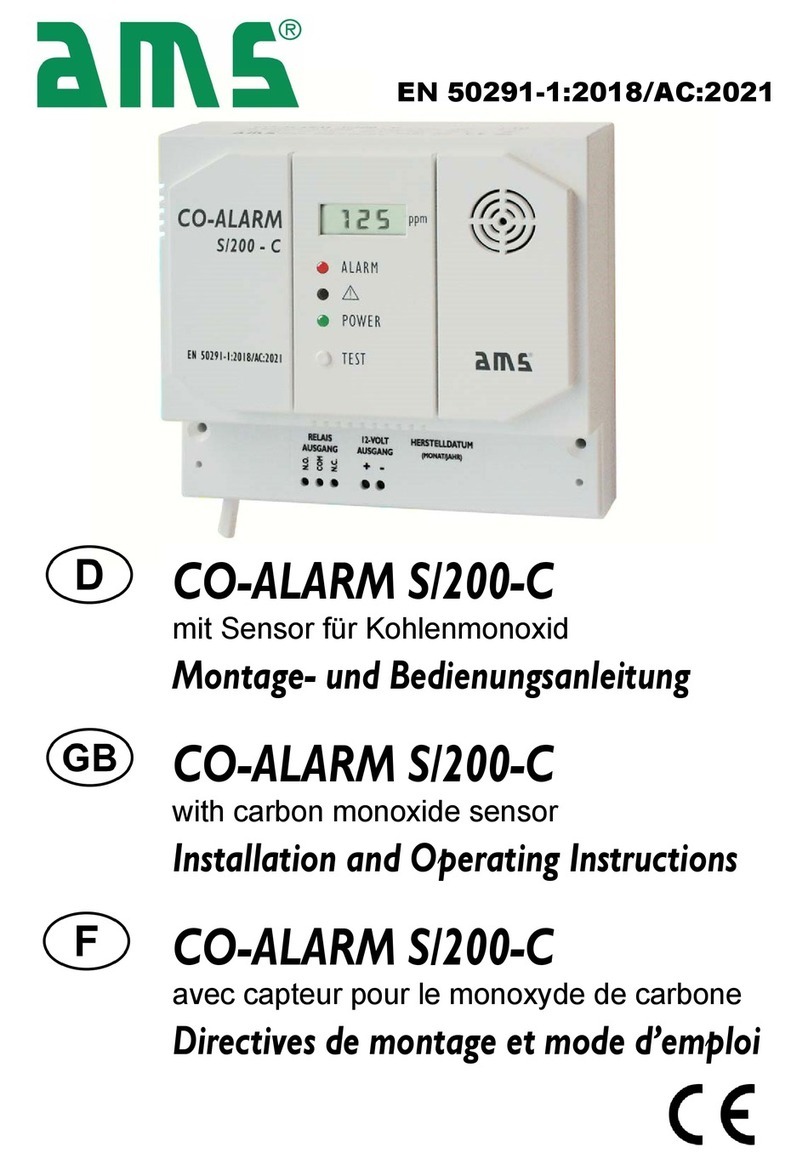
Lassen Sie Gas aus dem Feuerzeug in unmittelbarer Nähe der Sensoröffnung des
Gasalarms entweichen, ohne dass die Flamme brennt.
Der Sensor erfasst das ausströmende Gas. Überschreitet die Gaskonzentration
am Sensor die voreingestellte Empfindlichkeitsgrenze, so erfolgt ein Alarm: Es
ertönt ein pulsierender Signalton und die rote ALARM LED blinkt.
Sobald derAlarm signalisiert wird, lassen Sie kein weiteres Gas aus dem Feuerzeug
entweichen.
Der Alarm verstummt automatisch, sobald die Gaskonzentration am Sensor unter
die voreingestellte Empfindlichkeitsschwelle sinkt.
8
Funktionsprüfung
Für den Funktionstest des Gasalarms verwenden Sie ein Gasfeuerzeug. Bitte gehen
Sie in folgenden Schritten vor:
Die Funktionsprüfung sollte in regelmäßigen Abständen, mindestens alle 4
Wochen, durchgeführt werden!
Lebensdauer
Die zu erwartende Lebensdauer des Sensors beträgt unter normalen
Umgebungsbedingungen im permanenten Betrieb ca. 5 Jahre.
Ersetzen Sie den Gasalarm nach einer Betriebsdauer von 5 Jahren!
Verschiedene Chemikalien können den Sensor auch dauerhaft schädigen.
Folgenden Stoffen und Umgebungen sollte man den Sensor nicht aussetzen:
Silikonhaltige Sprays und Kleber
Aggressive Umgebungen, in denen Schwefelwasserstoffe, Schwefeldioxid, Chlor
oder Chlorwasserstoff enthalten ist (chlorhaltige Reinigungsmittel, Entkalker-Sprays)
Feuchtigkeit und Kondenswasser
Salzhaltige Atmosphäre
Fehleranzeige
Der Gasalarm führt eine ständige Selbstkontrolle durch. Hierbei auftretende Fehler
werden durch Blinken der gelben FEHLER-Anzeige angezeigt. Weiterhin werden zwei
kurze Signaltöne pro Minute ausgegeben.
2 kurze Signaltöne alle 60 Sekunden,
gelbe FEHLER-Anzeige blinkt
Die Fehleranzeige kann entweder durch die Umgebung ausgelöst werden oder es liegt
ein Gerätedefekt vor.
Wird ein Fehler angezeigt, so gehen Sie bitte folgendermaßen vor:
Prüfen Sie, ob die Umgebungstemperatur außerhalb des zulässigen Bereichs von
-10°C bis +40°C liegt.
Prüfen Sie, ob in der Luft vorhandene chemische oder andere Stoffe die Fehleranzeige
ausgelöst haben könnten, wie z.B. eine hohe Konzentration von Säure oderAlkohol
in der Luft, Reinigungsflüssigkeiten, Farben, Lacke, Sprays, Poliermittel, Kochdampf,
Tabakqualm. Gegebenfalls prüfen Sie den Gasalarm in einem anderen Raum. Wird
dort kein Fehler signalisiert, so liegt die Ursache in den Umgebungsbedingungen
am ursprünglichen Installationsort.
Ist die Fehleranzeige weiterhin aktiv, so liegt entweder ein Gerätedefekt vor oder der
Gasalarm ist nach einer Betriebsdauer von ca. 5 Jahren verbraucht.
In diesem Fall ist der Gasalarm zu ersetzen!





























